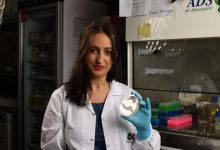
In a breakthrough research conducted at the University of Manchester, scientists have been able to develop the first non-antibiotic drug for successful treatment of Tuberculosis. The ability of the drug to target even the antibiotic-resistant strains has brought joy in the scientific community.
Outreach of Tuberculosis
Although the drug against Tuberculosis was discovered some 100 years ago, still one out of three people are thought to be infected from the disease across the world. About 1.7 million people die of the disease every year.
The disease is highly prevalent in India, Africa, and China, but is on a rise in the UK as well. London, now often described as the TB capital of Europe.
How the drug works
Mycobacterium Tuberculosis secretes molecules called Virulence Factors – the cell’s secret weapon -which block out the immune response to the infection, making it difficult to treat.
The team identified one Virulence Factor called MptpB as a suitable target, which when blocked allows white blood cells to kill Mycobacterium Tuberculosis in a more efficient way.
Since there is nothing similar to MptpB in humans, the compound that blocks it has no toxic effect on human.
High Expectations With The Breakthrough
Professor Lydia Tabernero, the project leader said, “For more than 60 years, the only weapon doctors have been able to use against TB is antibiotics. But resistance is becoming an increasingly worrying problem and the prolonged treatment is difficult and distressing for patients.
“And with current treatments, there’s no guarantee the disease will be eliminated: antibiotics do not clear the infection and the risk of being infected with drug-resistant bacteria is very high.”
“But by disabling the clandestine bacteria’s defenses we’re thrilled to find a way that enhances the chances of the body’s immune system to do its job, and thus eliminates the pathogen.”
The research has been proven effective in guinea pigs suffering from with acute and chronic TB infections. The next stage is to optimize the compound and clinical trials will be possible after four years.






